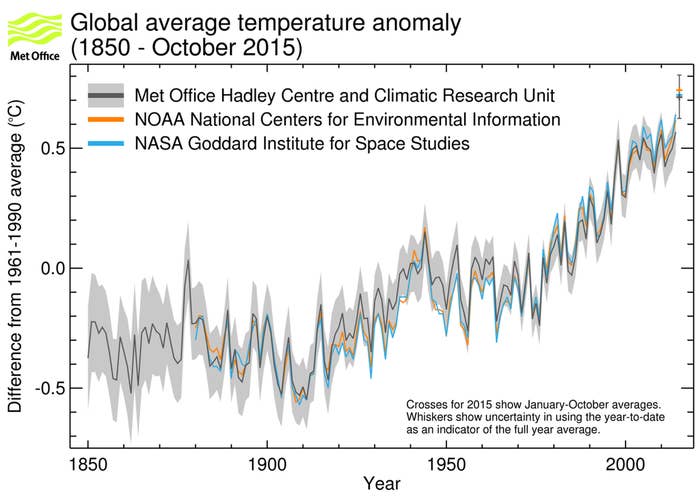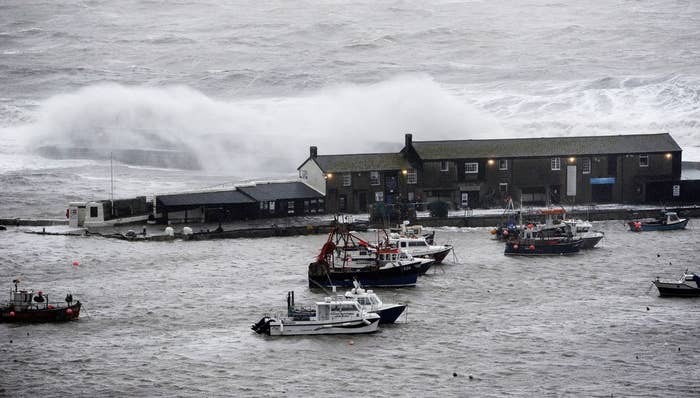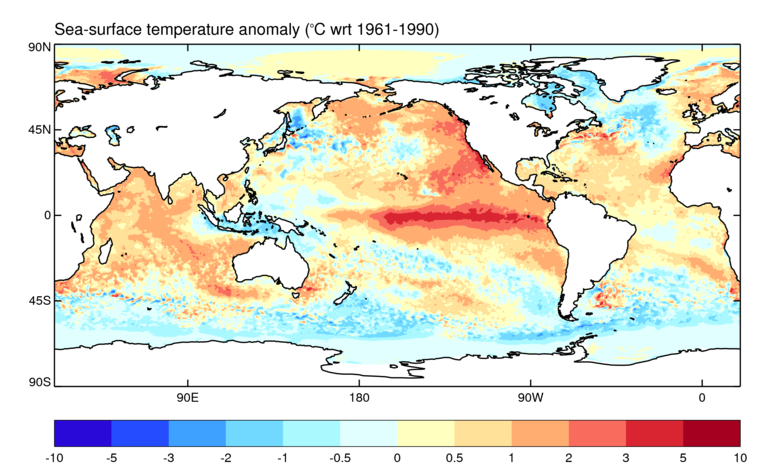The year that's just closing will have been, very probably, the hottest year on record, and in Britain and the US it's been one of the warmest – and wettest – winters.


In western Europe, one thing that El Niño does is cause warm, wet, stormy weather at the beginning of winter.
There are other factors at play, says Scaife, but both climate change and El Niño increase the risk of major storms like those which have flooded parts of England in the last few weeks.
It may not last, though. "Later in the winter, El Niño is associated with colder, more blocked conditions," he says.

What's more, this isn't just any El Niño. It's a whopper.
"The big news is that this is the largest El Niño in 20 years," says Scaife. "It's 3°C above normal, and it's peaking right now.
"What will happen is that that warmth will spread across the globe, and add to the effects of climate change."
Which is why this year has been such a scorcher – and why next year, almost certainly, will be too.
Scaife says that 2015 "is at or near record temperatures. That's mainly climate change, but El Niño is affecting that." The Met Office, NASA, and the US National Oceanic and Atmospheric Administration all agree on that. What's more, it follows 2014, which was itself a record year – without the input of El Niño – and because El Niño will drag on until next year, 2016 is predicted to be even warmer. "By the end of 2016, we may have had three records in a row," Scaife warns.

Britain is struggling with devastating floods, which can be partly blamed on El Niño. But other parts of the world may be even worse affected, and less able to deal with it.
Scaife says that Australia, South Africa, and northern Brazil are all at risk of severe drought in the next few weeks, while Argentina and the eastern United States are facing the risk of floods.
All this has been observed in earlier El Niño years, he says, and is also predicted by Met Office climate models. "When you get that agreement between theory and observation, you can be pretty confident."
And we can expect more of this in future, because while El Niño comes and goes, the effects of climate change will keep building up.
The ENSO cycle is part of what's called "natural variability", the semi-random, semi-cyclical ups and downs that the climate goes through anyway. But underneath all that, there is the steady impact of increasing global temperatures.
"When these natural factors add to underlying climate change, that's when you get these unprecedented events," says Scaife. A big upward bump added to the slow increase caused by climate change is enough to cause these really extreme events – especially, he points out, since climate change is also expected to increase rainfall, because warmer oceans means more water evaporating from the surface and forming rainclouds.

After next year, it may die down for a while. But we can expect more of this sort of thing in future.
This El Niño will come to an end in the first half of 2016, and 2017 will most likely not be as warm. But behind that natural, temporary cooling, the steady warming impacts will continue, and next time El Niño comes around, we can reasonably expect more of the same.
